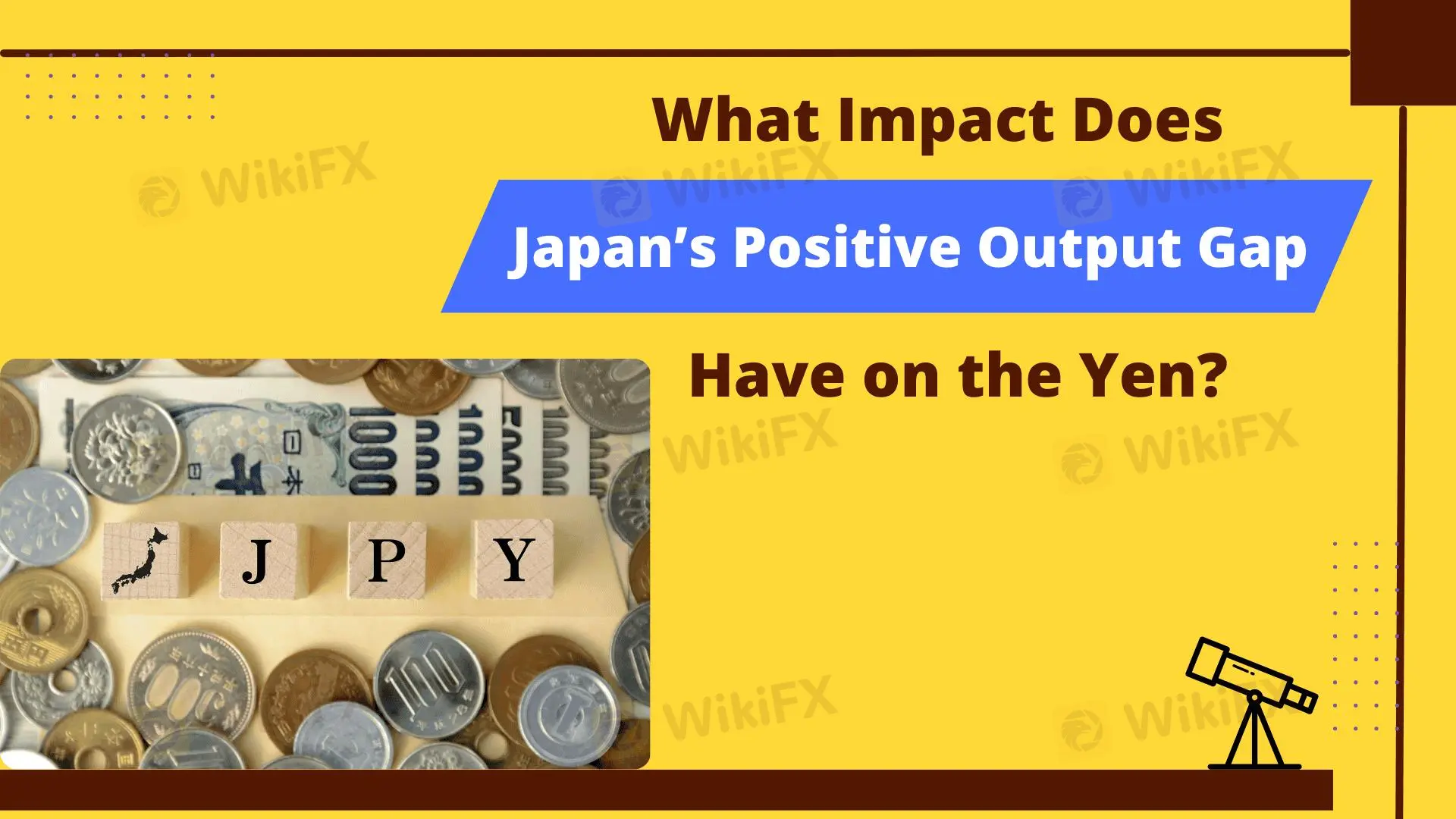简体中文
繁體中文
English
Pусский
日本語
ภาษาไทย
Tiếng Việt
Bahasa Indonesia
Español
हिन्दी
Filippiiniläinen
Français
Deutsch
Português
Türkçe
한국어
العربية
What Impact Does Japan’s Positive Output Gap Have on the Yen?
Abstract:The Japanese government has announced that, due to a tight labor market, the country’s economic output is expected to return to full capacity in the next fiscal year for the first time in seven years.

Recently, the Japanese government stated that, driven by a tight labor market, Japans economic output is projected to recover to full capacity in the next fiscal year. This marks the first positive output gap in seven years, suggesting that the Japanese economy may be gradually recovering from the impacts of the pandemic.
According to estimates from the Cabinet Office, Japan‘s output gap—the difference between actual output and potential output—could reach +0.4% in the fiscal year starting in April 2024. A positive output gap indicates that actual output has surpassed the economy’s full potential capacity, typically signaling strong demand. However, the Cabinet Office also highlighted that labor shortages could pose a significant constraint on economic supply. Japan‘s labor force currently stands at around 69 million, and insufficient labor supply could pressure sustained economic expansion. Additionally, Japan’s overall Consumer Price Index (CPI) is expected to slow from 2.5% this year to 2% in the next fiscal year, indicating that inflationary pressures may stabilize.
Future Trends and the Impact on the Yen
The positive output gap reflects a revival in Japan‘s economic demand, but labor shortages could create supply-side bottlenecks. The return to a positive output gap, associated with economic recovery, may boost market confidence in Japan’s economy. This metric is also a key indicator for the Bank of Japan (BOJ) in assessing whether the economy has sufficient momentum to sustain inflation. As a result, if the Japanese economy continues to improve, markets may anticipate the BOJ gradually scaling back its monetary easing policy or even entering a rate hike cycle.
In terms of the yen‘s trajectory, this news could provide short-term support. A positive output gap and a tight labor market might drive increased demand for the yen, particularly in the USD/JPY currency pair, potentially leading to yen appreciation. However, over the long term, the yen’s movement will depend on the BOJs specific policy actions. If the central bank maintains its accommodative stance to support economic recovery, the scope for yen appreciation could be limited.
Disclaimer:
The views in this article only represent the author's personal views, and do not constitute investment advice on this platform. This platform does not guarantee the accuracy, completeness and timeliness of the information in the article, and will not be liable for any loss caused by the use of or reliance on the information in the article.
Read more

Want to Succeed in Forex? Start with the Right Trading System
If you want to trade currencies and make money in the long run, you need a good forex trading system. Many new traders enter the market without a clear plan. Some rely on luck or tips from others. But trading without a system often leads to losses.

Risk Involved with Cabana Capital – Every Trader Should Know
Cabana Capital has changed its name and logo, basically everything about its identity. This seems a bit suspicious, and it's something you should definitely be concerned about. In this article, you’ll learn about the red flags that every trader needs to watch out for.

CME International Records a Massive Jump in Forex Volumes
CME International recorded a record surge in its foreign exchange trading volumes during the second quarter. Check out its performance across products and markets.

Scam Brokers Exposed! FCA Warns Traders to Stay Safe
If you are into forex trading, you need to protect your money from investment scams. Many scam brokers are active in the market now. The FCA, a reputed financial regulator, has issued a list of unlicensed brokers you need to stay away from.
WikiFX Broker
Latest News
What is a Pip in Forex?
New to Forex Trading in India? Here's How You Can Start and Maximize
FXTRADING.com: A Closer Look at Its Licenses
xChief: A Closer Look at Its Licenses
Intel spins out AI robotics company RealSense with $50 million raise
Risk Involved with Cabana Capital – Every Trader Should Know
Tom Lee's Granny Shots ETF is crushing the market and raking in cash
XTB Hack 2025: Major Security Breach Exposes Client Accounts
Nvidia's Jensen Huang sells more than $36 million in stock, catching up with Warren Buffett in net worth
These are America's 10 weakest state economies most at risk in a recession
Currency Calculator


